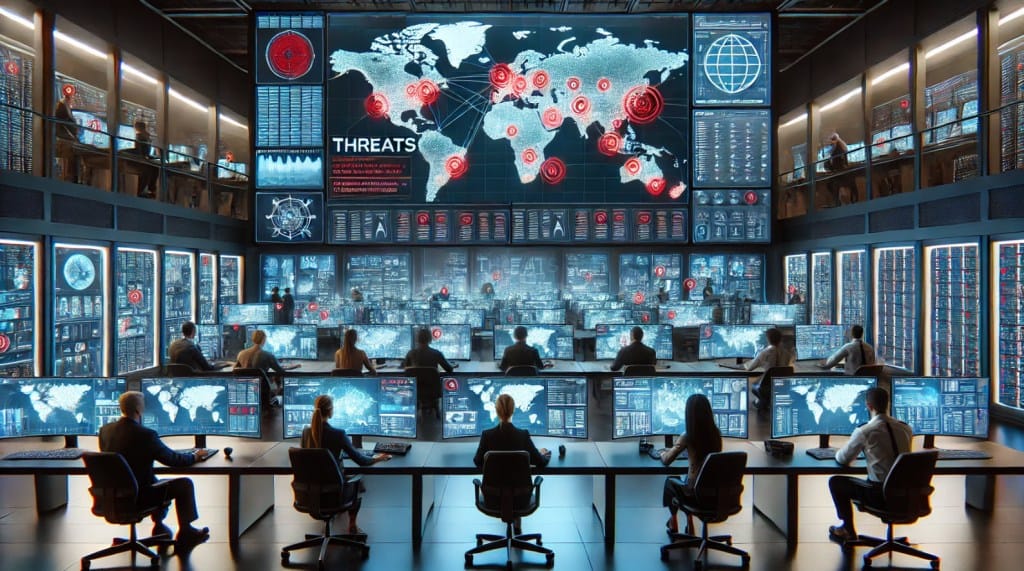Cybersecurity at AI Speed: Revolutionizing SOC Teams in 2025

Security operations centers (SOCs) are facing a formidable challenge from a new breed of automated adversarial attacks that run at lightning speed, making them tough to identify, understand, and repel.
With adversaries managing breakout times as quick as two minutes and seven seconds, the question is not if an SOC will be targeted but when. Alarmingly, 77% of enterprises have already experienced adversarial AI attacks.
Enter Agentic AI
Agentic AI offers SOCs a way to automate decision-making, adapt to emerging threats, and streamline various processes like alert triage and incident response. This innovation has proven beneficial in enhancing efficiency and bolstering security by identifying risks while trimming down the manual workload required to track them.
Notable cybersecurity firms providing agentic AI solutions for SOCs include Arcanna.ai, Cato Networks, Cisco Security Cloud, CrowdStrike's Falcon platform, Dropzone AI, Google Cloud Security AI Workbench, Microsoft Security Copilot, Nagomi Security, Palo Alto Networks, and Zscaler.
"The speed of today’s cyberattacks demands security teams swiftly analyze vast amounts of data to detect, investigate, and respond faster," said George Kurtz, president and CEO of CrowdStrike.
Strengthening SOC Teams with Agentic AI
The successful implementation of agentic AI or wider SOC AI solutions hinges on human-in-the-middle workflows. Gartner’s recent report emphasizes the need for security leaders and senior staff to pinpoint where human-led SOC functions persist and how to transition SOC analysts into roles needing more human-in-the-loop decision-making.
By 2026, AI is anticipated to lift SOC efficiency by 40% compared to 2024 levels, steering a shift toward AI development and protection.

Agentic AI as a Solution for SOC Challenges
SOCs require agentic AI that can rival the speed and insight of attackers to thwart intrusion or breach attempts. Many SOCs suffer from understaffing, and the complexity of data from outdated SIEM systems that lack effective visualization adds to the burden.
Legacy Systems Vulnerability: SOCs are encumbered by outdated SIEM systems and other legacy tools that can't handle AI-driven threat complexities. "The greatest threat to organizations is their security infrastructure complexity," remarked Cato Networks CEO Shlomo Kramer.
Alert Fatigue and Staffing Shortages: SOC analysts are overwhelmed by the sheer number of alerts and false alarms. Many organizations struggle to scale their SOC teams, often needing to hire externally to meet demands.
The Data Deluge in Security: SOC teams are beleaguered by massive data volumes, which makes it difficult to pinpoint threats among the noise.
Impact of Agentic AI
The most substantial gains from agentic AI stem from automating routine tasks, providing SOC teams with advanced intelligence tools.
Efficiency Gains: Agentic AI systems are enhancing efficiency by automating repetitive tasks at scale.
Real-Time Threat Detection and Analytics: These apps and platforms excel at identifying potential threats that human analysts might overlook.
Accelerating Incident Response: Agentic AI is designed to quickly identify and address incident response tasks to mitigate threats more rapidly.
Continuous Learning: Agentic AI strengthens SOCs by analyzing vast threat intelligence datasets, helping teams discern real threats from false positives.
The Role of Human Collaboration
"It’s not about replacing humans; it’s about augmenting them," stated Elia Zaitsev, CTO of CrowdStrike.
Agentic AI's success is contingent upon human collaboration, ensuring that technology augments human efforts rather than replaces them.